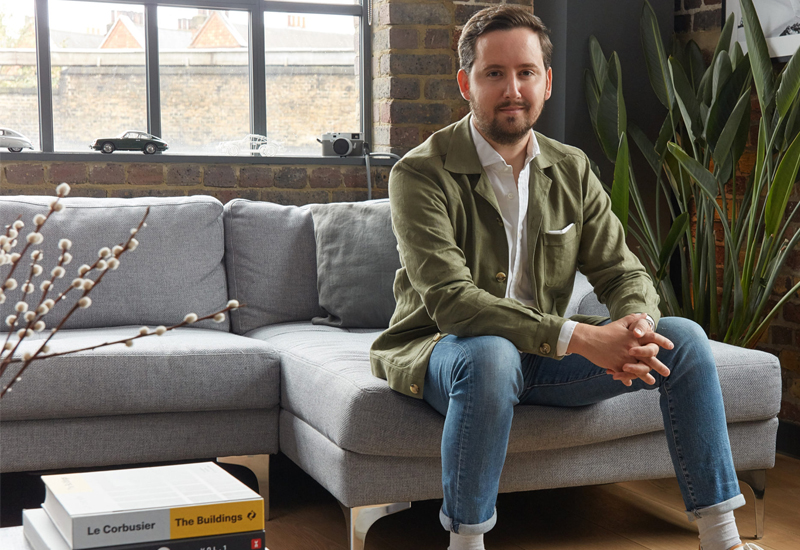The secondary market for luxury watches is maturing into a number of sub-sectors and differing business models. At the top end, once monopolised by the top five venerable auction houses, a new breed of digital natives are providing highly personalised services for small groups of collectors (don’t use the term investors) who are looking for the very rarest vintage watches or contemporary pieces from independents making tiny quantities every year. Silas Walton, still in his mid-twenties at the time, spotted an opportunity seven years ago to become a de-facto authorised dealer for super-scarce pre-owned watches from the likes of Roger Smith, Kari Voutilainen and Philippe Dufour. His company, A Collected Man, now generates annual sales of around £14 million ($20 million) trading these watches with collectors all over the world as Rob Corder discovered when we met up at his London headquarters.
WatchPro: I like to look at the origin story of interesting businesses like yours, and the personal journey of entrepreneurs. In your case, there is not a lot to go on since you are still young (33) and have been developing your business, first under the Watch Xchange name, and now A Collected Man, almost since you left university.
Silas Walton: I did work for almost a year in a city law firm, I had a summer job at Harrods and I did a six month post-graduate internship in private equity, but broadly speaking I had never had a proper job.
I was at law school in London and Paris and then went back to Paris for a year of business school at HEC, which took about six years altogether. During that time, as part of my internship at Lloyds Development Capital, the largest midcap private equity firms in London, I was in something called deal origination, which looked at buyout plans from management teams. I was just an intern as part of a four person team, but they threw me into every aspect: meeting the people, hearing their pitches, reading their business plans.
That, and my time at business school, convinced me that I wanted to run my own company and gave me the confidence to do it.
My first experience of the watch business was when I was trying to sell my own watch online that I had bought with my first pay cheque. It was a simple Cartier Tank that I had paid full retail for at Harrods. I needed the money as I wasn’t being paid, so I tried to sell it on eBay, which at the time was a very painful experience. I also tried to sell it on Bond Street, and was being asked to take a 60% haircut on the price I had paid a year earlier.
That was the genesis of my idea to start something myself that would try to solve the problems I was encountering.
I had a conversation with my father about that experience and we discussed how it might become a business. I worked on a business plan that started with two lines, then half a page, then 50 pages with hundreds of hours of research poured into it. Every spare minute I had was spent reading articles on WatchPro and every other sources of information on what companies like Watchfinder were doing in the UK. My original idea was to go into the midmarket luxury segment with online auctions.
One day, after I had been preparing to pitch this to a big watch collector I knew, I decided I would anonymously put it on the TZ-UK forum. I was terrified and the plan got taken to town by people. But one or two people very kindly went to the trouble of giving me more detailed feedback, and one of them suggested I look at doing consignment because Watchfinder had just stopped offering that as an option the week before. I had not thought about that so I started again and researched the consignment model.
WatchPro: Was the original plan to buy every watch you would then sell?
Silas Walton: Yes, the idea was to buy watches and then hold online auctions. That was before I even considered consignment, but there were other things I looked at as well: everything from the business models of high priced Mayfair auctioneers to the mass market eBay concept.
This was the beginning of 2014 and by the summer of that year I had completely changed the model. I was fixed on a few non-negotiables such as offering a polished and well-presented face to customers and that it had to have an international dimension to it.
I wanted to take the pain out of buying and selling luxury watches and I wanted it to be digitally smart on things like social media. It was all about delivering a high quality experience without paying the huge fees charged by auction houses.
To cut a long story short, I decided to go the consignment route but, within six months of launching, I realised that the mid-luxury market was all about price rather than being about the experience so there was very little margin.
That was the point at which I started thinking about independent watchmakers. I happened to have a couple of connections in that area and within about six months I had pivoted the business entirely.
We sold a Voutilainen, we sold a Roger Smith and suddenly I realised that, particularly in North America where they have a far higher level of comfort with digital businesses, doors were opening.
Selling those types of watches meant I could deliver a very high quality experience that was solid and repeatable.
Within one or two transactions, we had clients spending millions of dollars per year on watches becoming very comfortable working with us and calling us up for advice or just to talk about their collection. Because we had trust with these collectors, we were able to introduce watches priced at, say, $200,000, and they would buy them on our recommendation.
WatchPro: It feels like there is a piece missing from this story. When you say you were able to secure investment, your first pay cheque was spent on a Cartier Tank and that you happened to have a few contacts in the independent watchmaking world, it makes me think you must have been moving in the right circles form an early age. Are you like George Bamford, who we all know is the son of Lord Bamford (owner of the JCB construction equipment giant), or do you come from a more modest background?
Silas Walton: Nothing like that. My father is a self-made businessman in advertising and my mum raised the kids, but we were a typical middle class London family. My dad had retired by the time I started the company and he gave me a small amount of money, but we literally started in my front room, me and my partner, and we did not take salaries for the first two years.
WatchPro: That in itself suggests you had help. Not many among us could survive for two years without a salary.
Silas Walton: Fair point. I inherited some money a couple of years’ earlier that had allowed me to pay for business school and living expenses for about two years. I put in a chunk of my own money — about £20,000 — and that was matched by two other people. That was all we had for the first two years.
WatchPro: How did you come to know the watchmakers?
Silas Walton: My big advantage back in those days was that I knew one quite big watch collector in London, and he was the person I wanted to pitch my idea to from day one. I had convinced myself that his opinion would make or break the idea; whether or not he invested.
He initially said no, but he introduced me to somebody that had been in the watch business for 20+ years. He said yes immediately and then half an hour later the guy who had said no originally phoned me up and said he had changed him mind and was in.
WatchPro: Are you willing to say who those people are?
Silas Walton: One was Malcolm Gillan, who was part of the management team that bought Hamilton and Inches from Asprey in the late 1990s. He guided me for a year in all the things that you do not have the experience to know.
The other guy was David Sitwell. He was in advertising but had a great collection including a Roger Smith, a Voutilainen, some Journes; all sorts of interesting pieces.
He was another self-made entrepreneur so, when he said yes to me, he became my mentor for a year and put in the same seed capital as me. It was low risk and low cost for him.
WatchPro: I interrupted your story a little. You were talking about pivoting out of the volume luxury watch brands and into far more niche independents. I am not sure you could do that today because demand is so high for these watches, but that was not the case five or six years’ ago.
Silas Walton: I was being encouraged to become more niche in order to become better known in a narrower field, but I wanted to be more sector-agnostic, not least because sometimes there were no watches from independents available so we would focus on vintage.
I realised that, if we took the time to build a brand and avoided being too specific about the watches we were dealing in — so long as they were always ‘rare’ — then we could have more breadth.
You are right about it being a completely different world for independent watchmakers back then. David introduced me to Roger Smith and I took a punt and travelled to the Isle of Man to meet him. Roger spoke about how disappointed he was in the way his watches were handled on the secondary market, whether at auction or elsewhere.
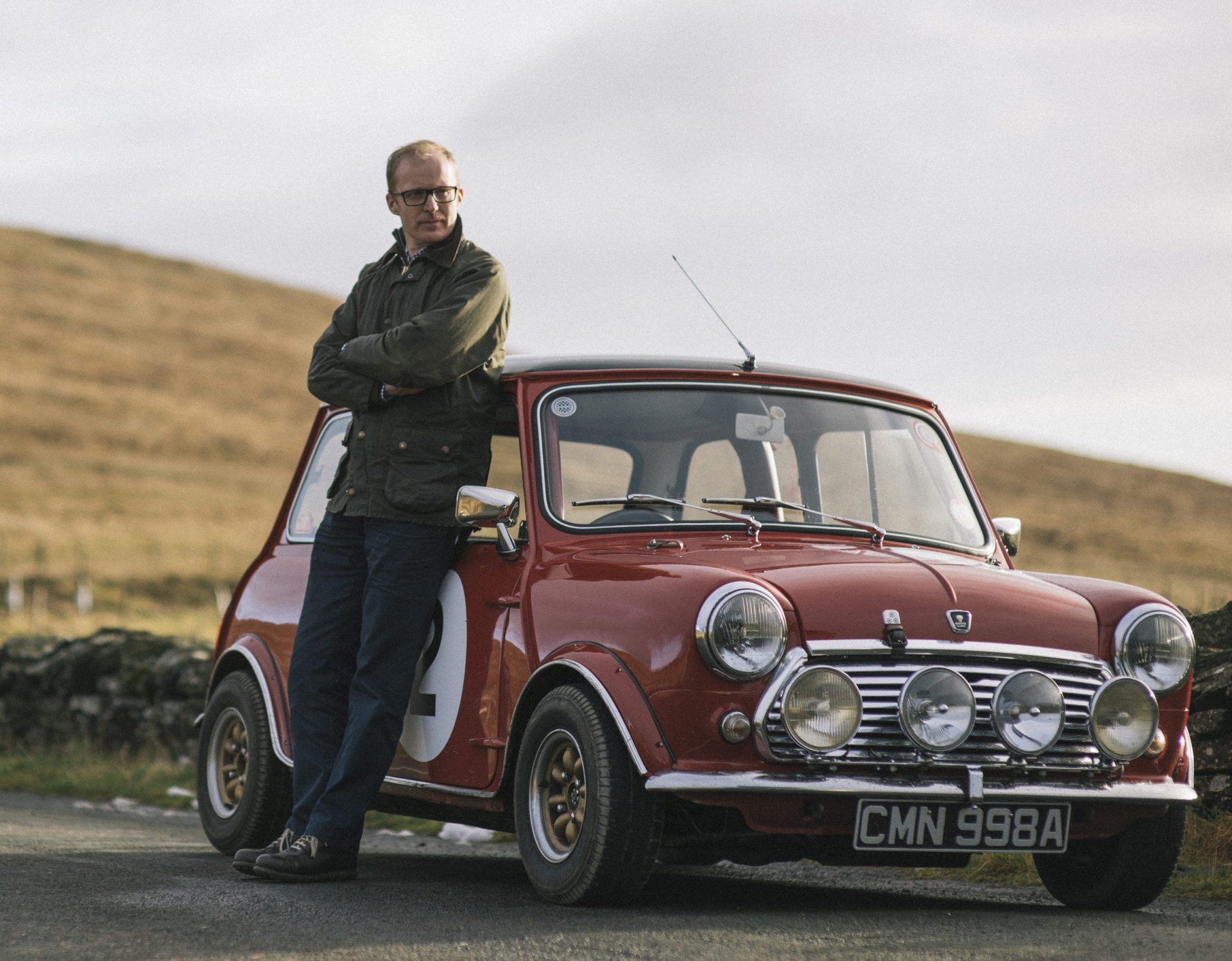
I suggested that we had a complete alignment of interests because I wanted to sell his pre-owned watches, to sell them well, and to be able to repeat sales over a long period as partners. With Roger endorsing what I was doing, that would be highly credible and we both stood to gain.
Sure enough, the first watch we spoke about selling, he suggested a price of £85,000 but I said it should be £120,000, it should be equal to, or above, retail. He thought that was interesting because his watches had never sold above retail before.
I said they should, and it did sell at above retail. Then it became £140,000, then £160,000 for his watches. We never jumped dramatically, we just reacted to the market and it was clear there was more demand than supply once prices on the secondary market rose above retail.
WatchPro: Was Roger a source for his own pre-owned watches?
Silas Walton: Not really. He might have given a few leads on people to speak to, but it was very limited. It was principally us finding the watches and Roger talking to us about their background. We had the opportunity to sell the very first Series 2 he ever made.
We had the opportunity to sell 00 watches and one of only four George Daniels Anniversary watches. We sold a Daniels tourbillon for one million pounds. All of these evolved from that first conversation with Roger.
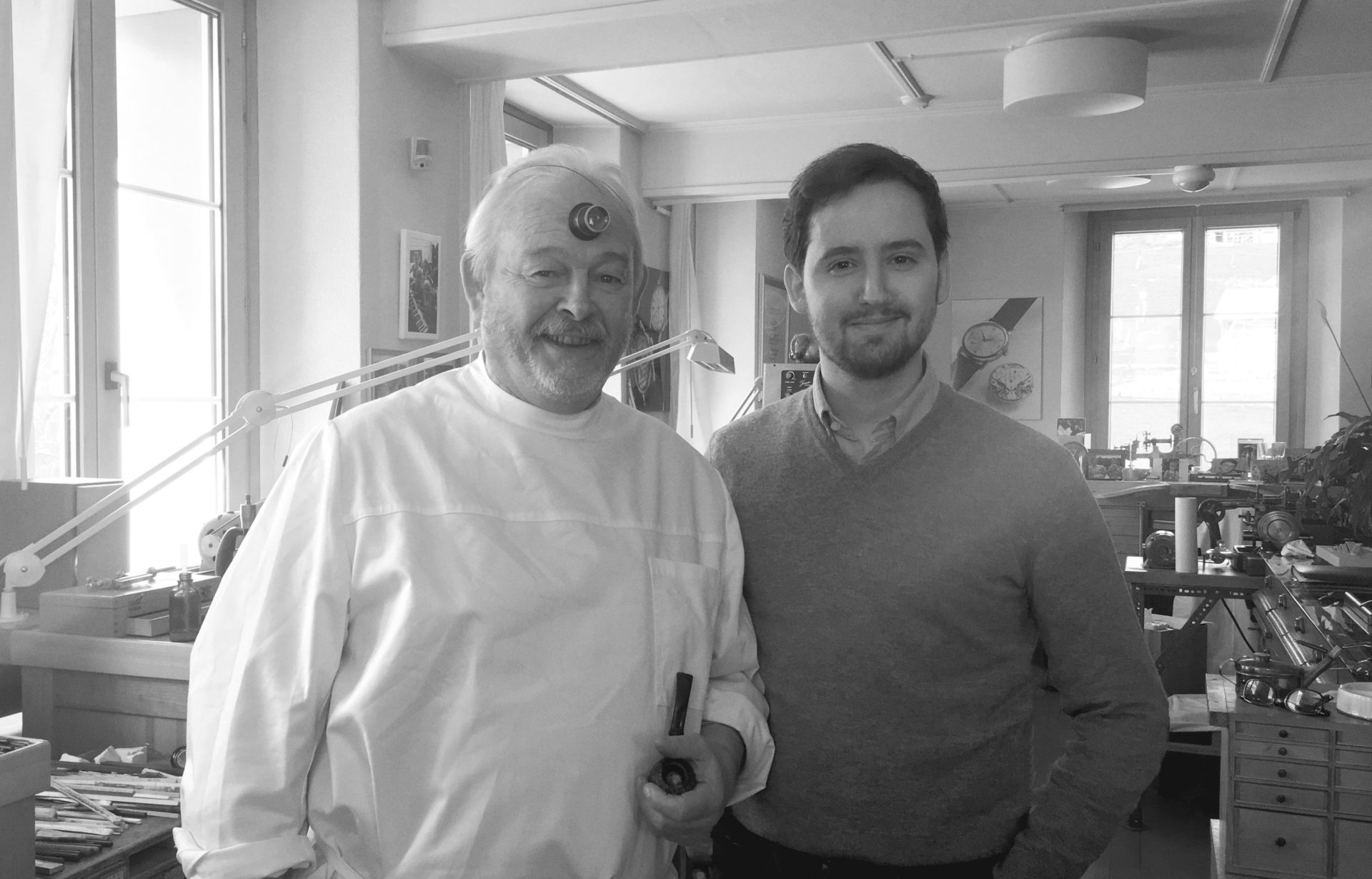
We then did the same thing with other independents. I flew over to meet Kari Voutilainen and Philippe Dufour. When we got a Simplicity, we interviewed Philippe to get information about it. We repeated that with Kari.
That Simplicity was the first time one had been sold online. They had only ever changed hands previously between collectors on forums. The Grande Sonnerie and the Duality had sold at auction before that time, but never a Simplicity, which was his most popular reference.
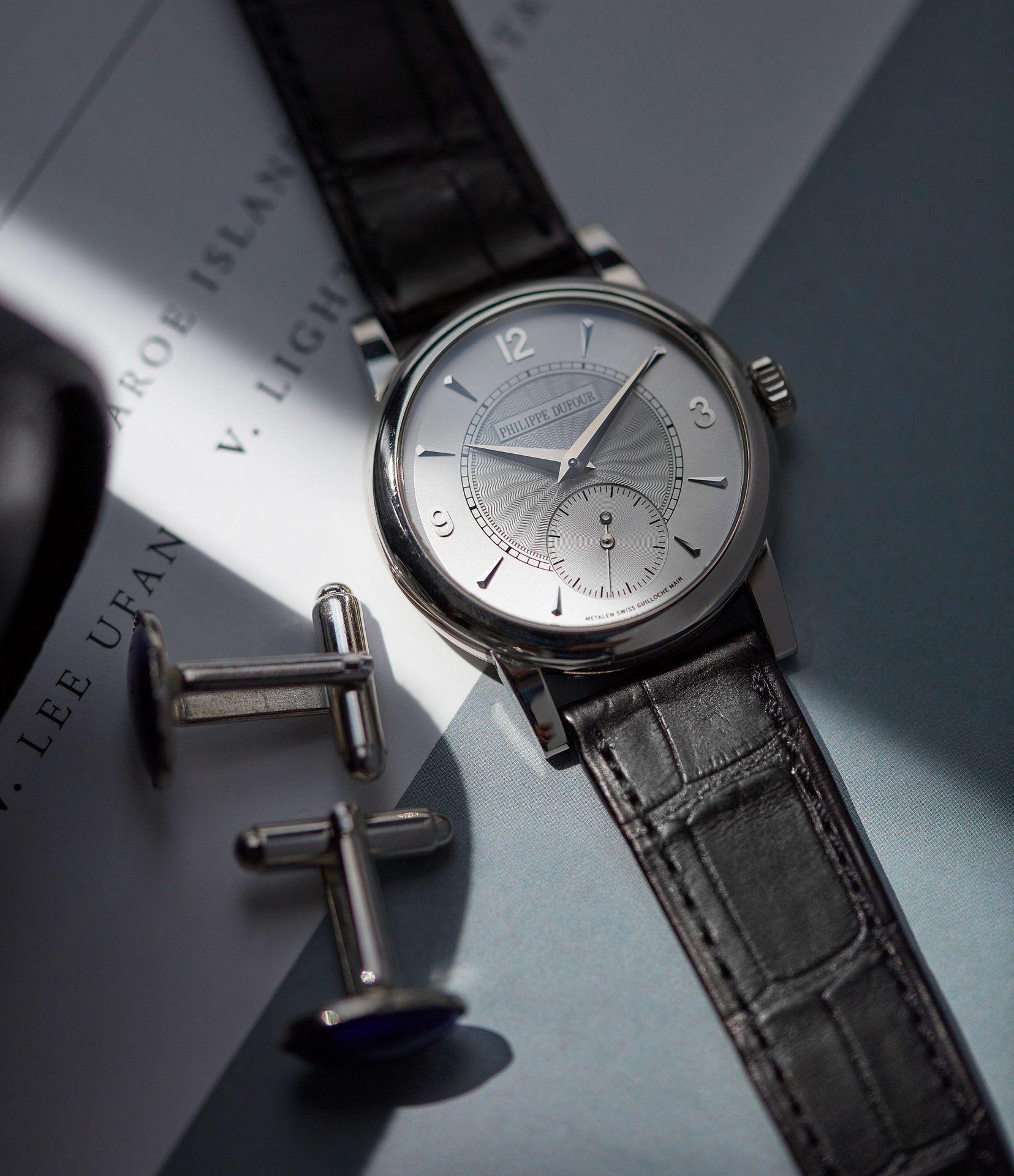
Nobody had paid more than £90,000 for a Simplicity, but we said it should be £125,000 and it sold within 20 minutes of us getting it. The next one we got sold for £160,000 then it was £200,000. Philippe was calling me up and auction houses were calling me up and asking for my opinion on prices.
There was more volume with Kari Voutilainen, but he was more reluctant until we told him about the prices we were commanding for his watches. He could not believe it. After that, the price became accepted and they all jumped for his watches.
WatchPro: How do you calculate prices when there are no references from the past? Are you wrong sometimes and you are just giving me the edited highlights?
Silas Walton: We have never failed to sell any watches from those independents. We have a 100% success rate. That does not mean we have never negotiated on price, but most people come to us because they trust us, not because they want to get a deal on a watch.
People come to us because we have something nobody else has got, watches are in excellent condition and everything we do is transparent and clear. Most people that collect these watches would prefer comfort and a good relationship with us rather than haggling over price.
We never price things beyond the realms of reality. We use whatever data we can find and our common sense.
WatchPro: How many watches have you been selling in a typical week and what was an average sale price?
Silas Walton: The volume of watches has not changed radically over the years, but the average price point and the rarity and the margin has shifted. When we started out, a typical sale would be in the region of £4,000 to £5,000.
Today, it is more like £50,000 to £60,000. There are massive outliers [at the high end], and we also want to offer more affordable watches, which we will do when we can do it properly. We are going to offer more watches in the £3,000 to £8,000 space, but that is difficult to do well unless you have a certain scale.
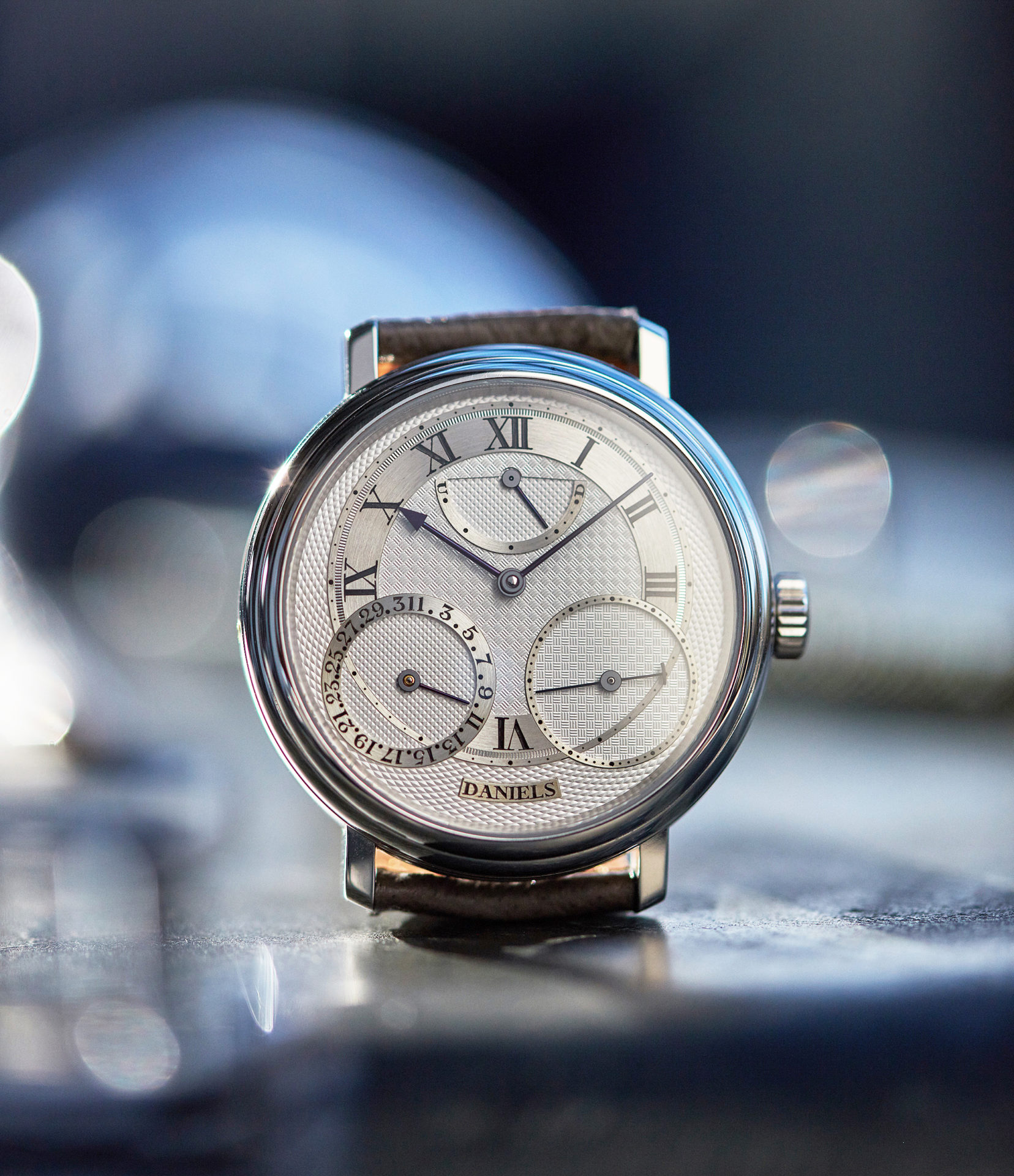
WatchPro: Has your mix of brands changed?
Silas Walton: The biggest change for us was in the last year or when we went very heavily into F. P. Journe. We did not start the escalation in the value of Journes, that happened elsewhere, but last year his watches accounted for almost 40% of turnover for us, which is huge. Journe has always been appreciated by collectors and America is the number one market for the brand.
WatchPro: Danny Govberg at Watchbox and Govberg Jewelers told me a few years ago he was “making a market for F. P. Journe”. Do you think he made a good call on a trend that was already in motion or did he manage to send Journe prices soaring through his influence as both a primary authorised dealer and the biggest trader of pre-owned Journe watches?
Silas Walton: A bit of both I would say. Govberg and Watchbox combined to have had more impact on Journe than any other business other than Journe itself, and probably more impact on that brand’s performance on the secondary market than has ever been achieved by any dealer with any brand.
There was always demand for Journe and the fundamentals were super clear. It was just that it had not got to the point where it was selling for over retail. Once that happens, it impacts the primary market, which increases shortages and that pushes prices up further.
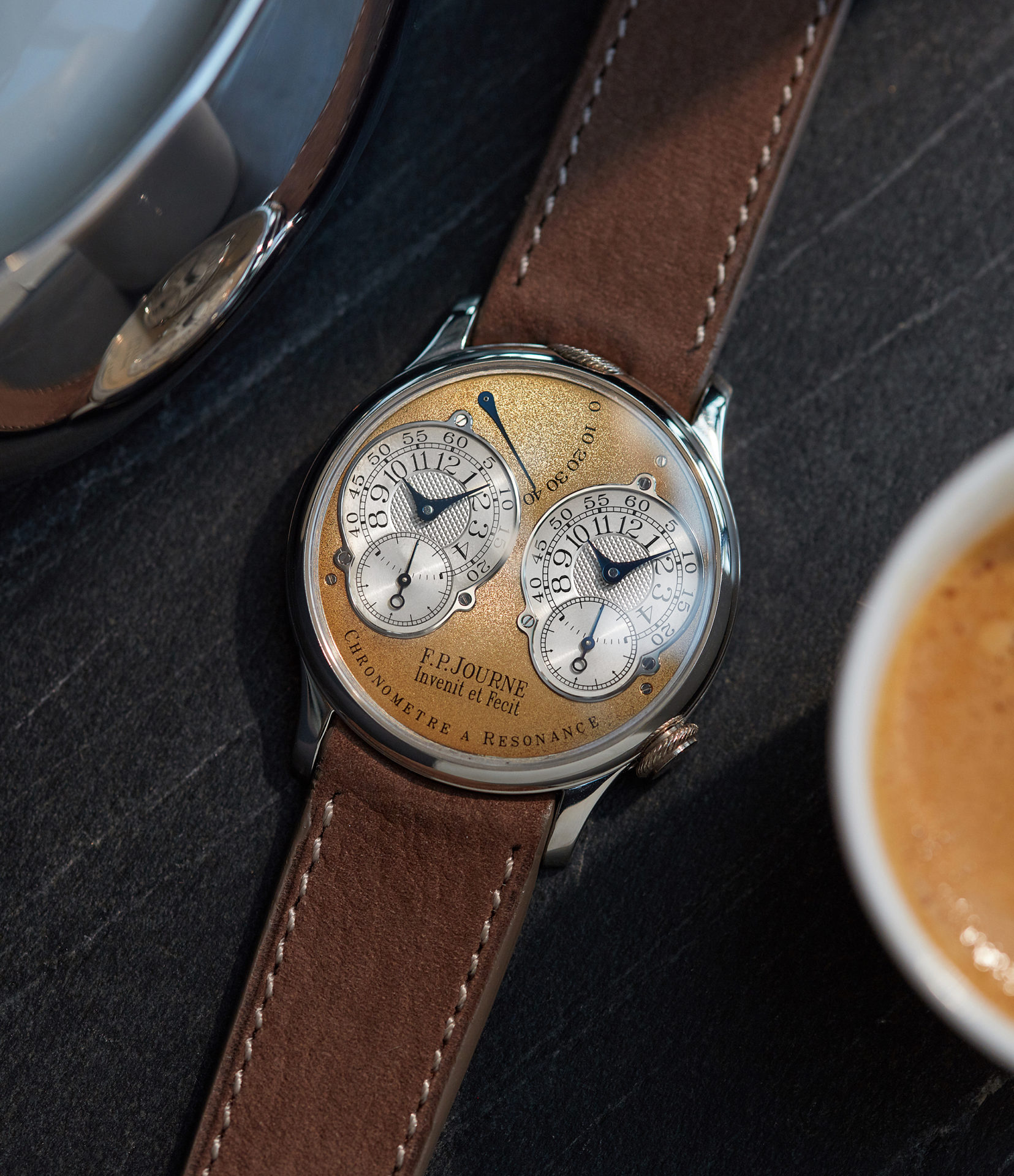
WatchPro: You told me ahead of this interview that the majority of your $20 million turnover comes from the United States and Asia, but I am interested in the UK market because it seems to be a bit of a desert for independent watchmakers compared, in particular, to the US.
Silas Walton: Kari [Voutilainen] once said to me anecdotally that the UK was his biggest market, and I have no reason to question that. There is certainly an appetite for good independents, it is just that they no longer need authorised dealers. Collectors are comfortable buying direct from the manufacturer.
It used to be that the moment you bought a watch from an independent, you would take a 30-40% bath. That is no longer the case. The watch I am wearing today is the first platinum Rexhep Rexhepi chronometer to enter the UK, I sold it to a client in the same year he won at the GPHG. We are one of his only two authorised retail dealers and I paid £20,000 over retail to buy it back from my client because I know for a fact that demand vastly outstrips supply.
The independent market has blossomed. There is interest everywhere. Independents do not need me, they do not need William & Son. They do not need a retailer holding stock because they can manage their own stock and sales. The only reason they work with people like us or The Hour Glass in Singapore is that we can bring something extra, which is more than simply being a point of sale.
We can bring wider recognition to our community, we can do amazing photography, we can introduce new clients and take any problems with a client off their hand as intermediaries.
We are educating clients and we are more than happy for watchmakers to speak directly to those clients. We do not build Chinese walls. We are not trying to keep clients to ourselves.
WatchPro: Does the value you can add to a watchmaker decline as demand continues to outpace demand?
Silas Walton: I don’t think so because I know it is extremely frustrating for independent brands to deal with clients. They have a limited number of hours in the day and they would rather have a handful of relationships with retailers that they really get along well with and are aligned with so that the message is always consistent to clients and we take care of any problems.
We will lose clients if we are not perfectly aligned and we do not bring sufficient value to clients and to brands. That applies to new watches and to pre-owned, but we need to have expertise and trust. It is very personal when we are dealing with both the brands and our clients.
WatchPro: The secondary market is maturing to the point where there are specialisms and sectors within sectors. It seems to me A Collected Man is like a stock market broker for ultra-high net worths; advising a small group of clients on what and when to buy and sell.
Silas Walton: That is exactly how it is at a certain level. I have come to learn that when people are looking at something that they do not entirely understand, they want reassurance so they become comfortable about a purchase as quickly as possible.
They do not want to feel they are having the wool pulled over their eyes, so they want honesty.
Most people have already decided they want something you have, then all you have to do is answer questions to make them comfortable about the purchase. You want to make it as simple as possible.
WatchPro: Does your relative youth work in your favour in this market? I have heard that people working in financial markets and entrepreneurs like the tech billionaires in Silicon Valley are a key demographic for independents.
Silas Walton: I am 33 and there is a valid point there, but it is more to do with the overall increase in demand for these watches in certain territories. At the highest end, you are still talking about people that have been through everything else; they have collected Patek, Lange, AP, Vacheron, a bit of vintage. They typically get to independents once they have been through everything else, and they want to buy them as smoothly and easily as possible.
Broadly speaking, you are not seeing any sort of drop off in demand from the traditional older collector, but what you are seeing is massive additional demand from new watch lovers at the younger end.
The sweet spot is the late twenties to late thirties where suddenly in North America and South East Asia, you have a new educated consumer that has access to information that did not exist before from the likes of Hodinkee and others, and suddenly they are able to figure out what they need to know quickly in an easy and enjoyable way.
WatchPro: It is the digitalisation that has created this tsunami of information and sharing of information. Until very recently that has come from everywhere but the traditional watch industry. So digital is driving up demand for a far broader range of watch brands, but supply remains finite. Even a basic grasp of economics says this only goes one way, with rising prices for in-demand products.
Silas Walton: I broadly agree of course. That is encouraging younger independent watchmakers to come to the fore like Rexhep Rexhepi. These watchmakers would not have been taken seriously and had their stories heard five to ten years’ ago.
In the past, big retailers or distributors might have come along and bankrolled a supply of 10 or so watches, which might be an entire years’ output and bought the lot at a price that gave the dealer a huge margin but did not benefit the watchmaker. They would have been selling their souls for two years by offering huge discounts to that retailer. That does not happen anymore. Relationships are much more balanced and fair between retailers and watchmakers.
Barriers to entry are higher in the rare end of the pre-owned market because we are constantly improving. We are launching a new website in a few months and the investment would have made me wince a few years’ ago but now it is crucially important because our clients are everywhere and it is very much a digital experience and relationship.
WatchPro: I wonder whether we might see a lot more young and talented watchmakers becoming commercially successful because they will have access to capital and advice that would not have come their way five years ago?
Silas Walton: It definitely is, and that is another reason why businesses like ours need to continually add more value. It is easier for new watchmakers to reach an audience and sell direct, so we need to keep getting better and better. The only reason for these brands to go to retailers is that they offer something they cannot do themselves.
Too much of the time, relationships and contracts with retailers can be nooses around the necks of new watch brands. Capital is a consideration, but what they really need are partners that are perfectly aligned and deliver added value the brands cannot generate themselves.
WatchPro: It is interesting that highly prestigious brands with centuries of history, making low volumes of watches, and with the support of conglomerates like Swatch Group and Richemont, do not seem to be riding the same wave as the independents. Is there a snobbery that is working against the likes of [brand names redacted]?
Silas Walton: I do not think it is snobbery. I would say it is entirely their own fault. They are boring and they do not make any effort to improve the way they communicate with younger consumers. There is a degree of arrogance mixed with lethargy and inertia that is shocking, especially with bigger brands. I have seen that first hand.
There is no innovation, even if the product is fantastic. If you only make marginal changes, you will only get marginal results.
There is an assumption that a story that has been chopped up and retold over so many years is somehow sufficient to keep people buying. If the people running marketing departments are career people that have been in those roles for decades, they are going to struggle to embrace what is going on. And, if the group is hierarchical, the younger people are terrified of upsetting their superiors with new ideas.
I will give you two positive examples to show things do not have to be that way. Omega and Longines are two brands that are reshaping their positions. I have enormous respect for Raynald Aeschliman, CEO of Omega, who I have met on a number of occasions and he has tremendous entrepreneurial energy that is working for Omega.
Longines — I have not met the new CEO [Matthias Breschen] — but what they are doing with their heritage, what they have done with their museum and the new pieces they have made using archive designs is genius.
Read WatchPro’s interview with Longines CEO Matthias Breschen here.
They are showing pragmatism and awareness of the way tastes are changing. When brands like this create limited editions of just a couple of thousand vintage-inspired pieces, that might not be commercially significant, but it sends a great message about their passion for watchmaking. They are reinventing themselves at scale.
WatchPro: Rolex barely changes anything, and that seems to work!
Silas Walton: That is one hundred percent true. But Rolex is in such a unique position that no company within or outside the watch industry can compare themselves to it.
Rolex got to where they are because they made the right decisions at the right times throughout their history, and they constantly doubled down. As a result, they have created barriers to entry that are higher than any other brand in any industry.
What is interesting about Rolex is that it speaks to all parts of the market. It is aspirational to people that cannot necessarily afford one, but knows the brand is a statement of success.
There is a person in their thirties, who can afford one and wants to show their success without it being too blingy. It is cool and sporty to them. And you have the collectors at the high end who are crazy about vintage. It is unbelievably consistent in the quality of its movements and its design.
WatchPro: Let’s return to talking about A Collected Man and the position of the company today. You represent Rexhep Rexhepi’s Akrivia and Petermann Bédat for new watches. Are you moving in that direction or will pre-owned always be your core business?
Silas Walton: Our future is primarily going to be in pre-owned. That is where we have the greatest independence, there is less politics, and the market is booming.
We only retail the two young and entrepreneurial brands you mention. It is fun to work with people like Rexhep Rexhepi, Gaël Petermann and Florian Bédat. I like these people.
I am sure there will be one or two other independent watch brands that we work with in the future, but it will be very limited and curated based on the best possible fit.
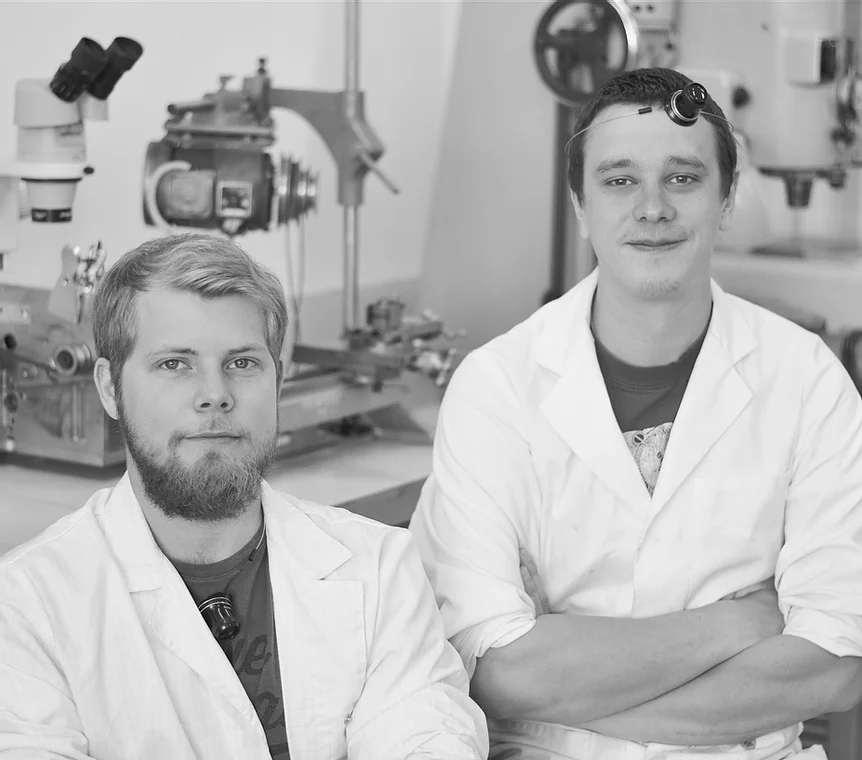
WatchPro: And on the pre-owned side, how much of that is consignment business and how much do you buy to sell these days?
Silas Walton: It used to be pretty much a hundred percent consignment, but that has shifted as we have reinvested capital. I sold ten percent of the company for a million dollars around three years’ ago, and with the capital we invested in more stock and content.
Today, the company is worth a lot more than that and now we purchase around two thirds of the watches. We consign when it is too expensive to buy the watch, when the risk is too great, or when we cannot agree with a client on the price of a watch they are looking to sell.
WatchPro: If I was speaking to a higher volume pre-owned specialist, I would be asking about authentication, servicing and standards of refurbishment. In the rarefied world in which you operate, is that even a factor?
Silas Walton: Whenever necessary, we send our watches to the brands for servicing and repairs. In most cases, when you are talking about incredibly rare watches, we can authenticate with 99.9 percent confidence.
We have never yet listed, bought, sold or consigned a watch that is fake. It is a statistical probability that it will happen at some point, but it has not happened yet. We do not do vintage Rolex because there is too much risk there.
Good luck faking a Resonance, a Duality or a Simplicity. It does not happen.
WatchPro: We are a year into the pandemic [speaking in March 2021]. What impact has that had on your business?
Silas Walton: The only way to describe it is that it has been an accelerant for existing trends. Six years ago I was already of the view that we should bet on the digitalisation of the luxury watch industry. I was convinced, despite having the door closed on me by a couple of Burlington Arcade retailers, that it was where people would end up going.
There are customers in the United States that are happy to spend large sums of money with trusted digital retailers based on reputation and great photographs.
Somebody from Watchfinder, possibly speaking to WatchPro five or six years ago, said the pre-owned watch market was like the second hand car market in the seventies. That was true but the rare end of the watch market has been the last part to digitalise because it is the highest risk and the highest values.
Combine the convenience and reach of digital with the security you get through legal recourse if anything goes wrong, the transparency that online reviews shine on any operator, and the various methods of payment available today — bring all that together and the boom in the pre-owned market that was happening before covid, the boom in independents that was happening, and the digitisation of the whole luxury watch industry — it had created incredible momentum coming into this crisis.
We had a week or so when everybody was holding their breath and then we put ourselves on a war footing and asked ourselves what needed to be done. We hired an editor and freelancers to create original content so that, even if we had gaps in our watch sourcing abilities because of covid, there would still be a reason for people to visit our website. Let’s make sure we have a photographer who is comfortable and motivated to keep coming into the office to work. Let’s continue to reassure customers that we were buying and selling.
After a week of holding our breath, we realised that, particularly with Journe where we had bet big, the market was really taking off and nobody else was selling. That turned into a massive surge in business. We did something like three quarters of a year’s business in one quarter and we just carried on from there.
At the end of March, which is the end of our financial year, we will have broken through $20 million, about £14.5 million. In the previous reporting period, which was 16 months, we did something like £12 million.
So we beat a 16 month financial year with sales of £12 million before the pandemic with £14.5 million turnover in a 12 month financial year.

